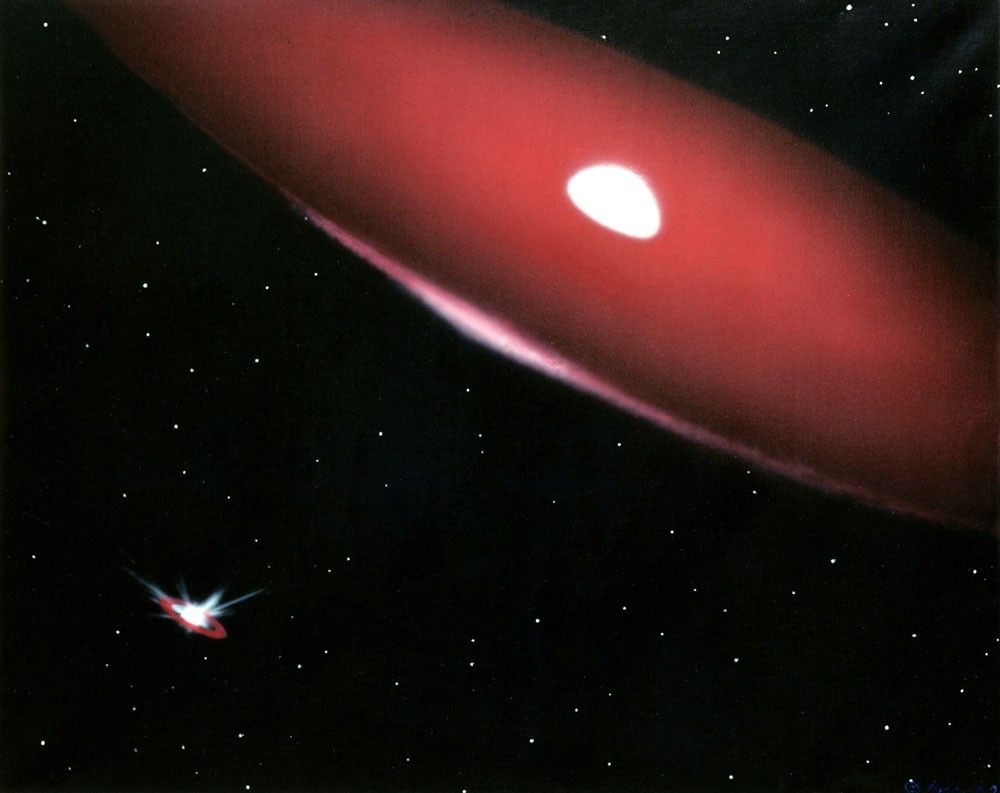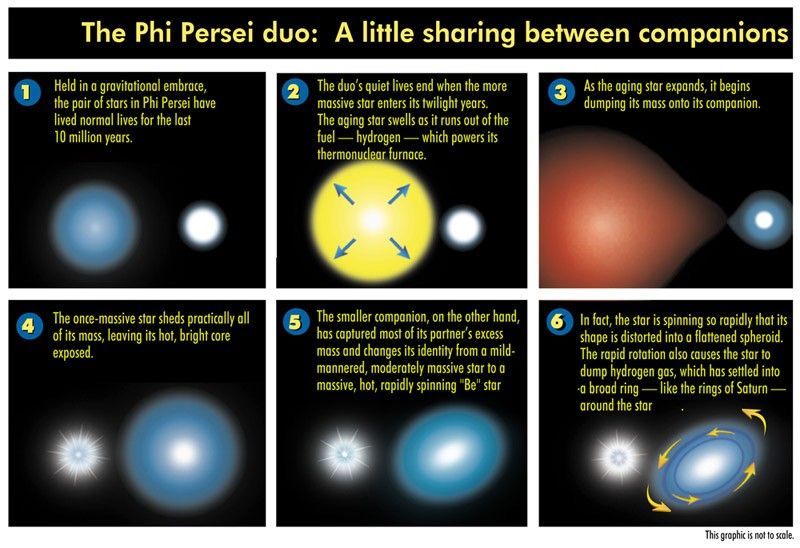1 min read
One Star’s Loss Is Another’s Gain: Hubble Captures Brief Moment In Life Of Lively Duo

Life near the double-star system of Phi Persei is never dull, as this illustration shows. Taken from the perspective of one of the Hubble Space Telescope observations of Phi Persei, this artist's depiction provides a taste of the double- star system's unstable existence. The bright "Be" star - a type of hot star with a broad, flattened disk - is the white, semicircular object looming in the upper right of the illustration. The red, pancake-shaped object surrounding the star is a gas disk. The gas is material the star is losing because of its rapid rotation. The small, hot subdwarf is in the lower left of the illustration. The blasts of white light represent particles of material - called a stellar wind - being released by the star. This powerful stellar wind is heating part of the "Be" star's gas disk. The red ring of material surrounding the subdwarf was probably formed from the "Be" star's outflow of gas. The subdwarf is moving toward the right in its 126-day orbit around the "Be" star.
About the Object
- R.A. PositionR.A. PositionRight ascension – analogous to longitude – is one component of an object's position.01h 43m 39.63s
- Dec. PositionDec. PositionDeclination – analogous to latitude – is one component of an object's position.50° 41' 19.43"
- Object NameObject NameA name or catalog number that astronomers use to identify an astronomical object.Phi Persei
- Release DateDecember 4, 1997
- Science ReleaseOne Star’s Loss is Another’s Gain: Hubble Captures Brief Moment in Life of Lively Duo
- CreditIllustration courtesy of: Bill Pounds
Share
Details
Last Updated
Aug 17, 2025
Contact
Media
Claire Andreoli
NASA’s Goddard Space Flight Center
Greenbelt, Maryland
claire.andreoli@nasa.gov






























